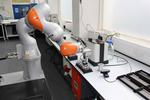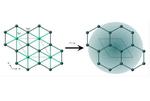Other

“Researchers at the University of Liverpool and the University of Southampton have used computational design methods to develop non-metal organic porous framework materials, with potential applications in areas such as catalysis, water capture or hydrogen storage. In a study published …

“University of Liverpool computer scientists have solved a long-standing algorithmic puzzle to speed up a core building block of Python, the most popular programming language and the foundation of modern artificial intelligence systems. The discovery has resulted in a better …

“A collaborative research team, led by the University of Liverpool, has discovered a new inorganic material with the lowest thermal conductivity ever reported. This discovery paves the way for the development of new thermoelectric materials that will be critical for …

“Researchers at the University of Liverpool have built an intelligent mobile robot scientist that can work 24-7, carrying out experiments by itself. The robot scientist, the first of its kind, makes its own decisions about which chemistry experiments to perform …

“The University’s Stephenson Institute for Renewable Energy is part of a new research consortium that has been awarded £11.2 million by the Faraday Institution to explore and develop new materials for next-generation lithium batteries that can be used …

“An international research team led by the University of Liverpool and McMaster University has made a significant breakthrough in the search for new states of matter. In a study published in the journal Nature Physics, researchers show that the perovskite-related …

“Researchers at the University of Liverpool have made a discovery that could improve the conductivity of a type of glass coating which is used on items such as touch screens, solar cells and energy efficient windows. Coatings are applied to …

“A team of scientists from the University of Liverpool, University College London and the University of Zaragoza in Spain has discovered a way to induce and control a fundamental electrical switching behaviour on the nano-scale. Their results are reported in …

